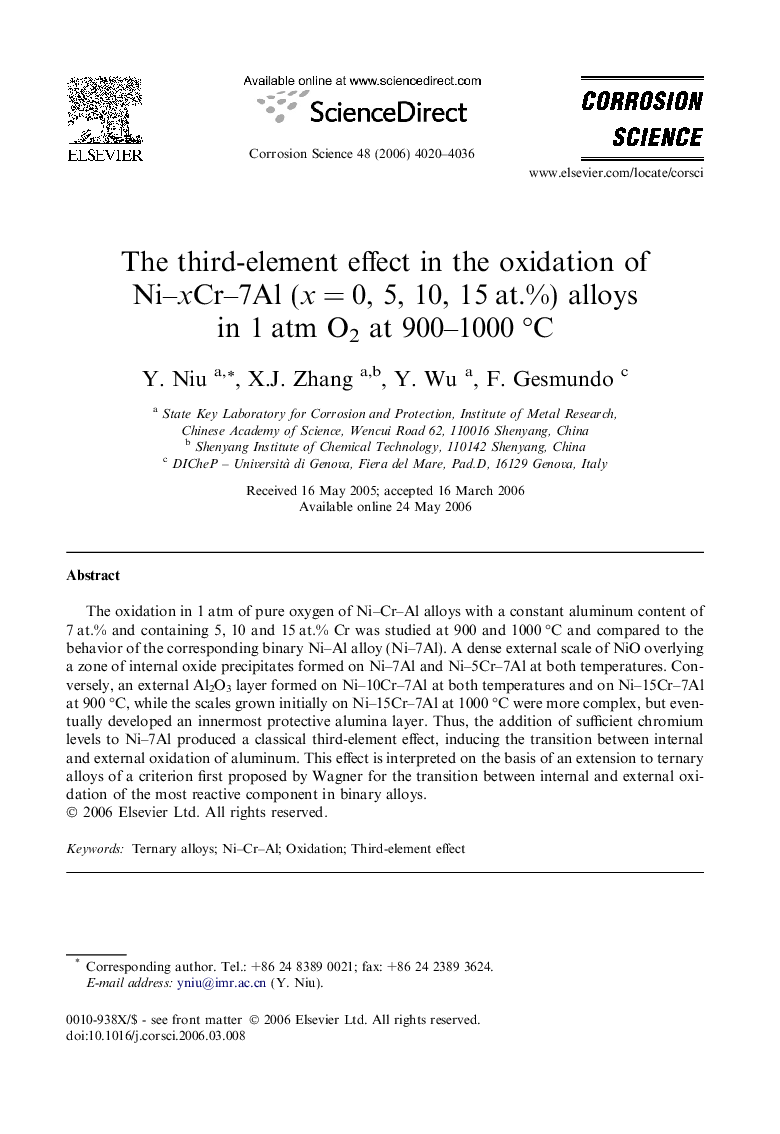| Article ID | Journal | Published Year | Pages | File Type |
|---|---|---|---|---|
| 1472113 | Corrosion Science | 2006 | 17 Pages |
The oxidation in 1 atm of pure oxygen of Ni–Cr–Al alloys with a constant aluminum content of 7 at.% and containing 5, 10 and 15 at.% Cr was studied at 900 and 1000 °C and compared to the behavior of the corresponding binary Ni–Al alloy (Ni–7Al). A dense external scale of NiO overlying a zone of internal oxide precipitates formed on Ni–7Al and Ni–5Cr–7Al at both temperatures. Conversely, an external Al2O3 layer formed on Ni–10Cr–7Al at both temperatures and on Ni–15Cr–7Al at 900 °C, while the scales grown initially on Ni–15Cr–7Al at 1000 °C were more complex, but eventually developed an innermost protective alumina layer. Thus, the addition of sufficient chromium levels to Ni–7Al produced a classical third-element effect, inducing the transition between internal and external oxidation of aluminum. This effect is interpreted on the basis of an extension to ternary alloys of a criterion first proposed by Wagner for the transition between internal and external oxidation of the most reactive component in binary alloys.
